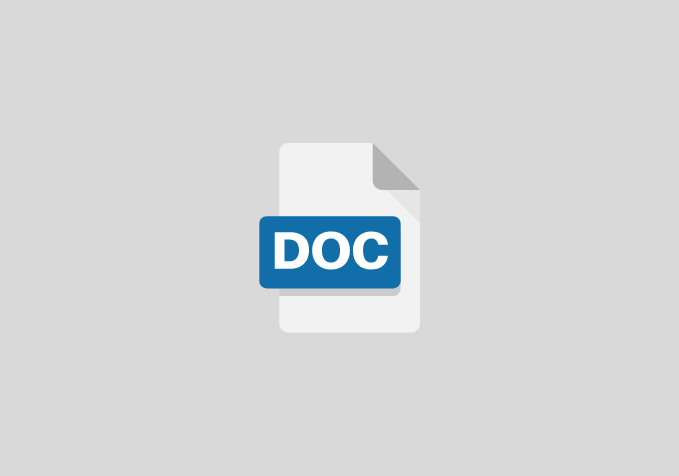Fabrication of a Foldable Camp Bed
Chapter One
Preamble of the Study
Camp bed is used universally for relaxation, emergency eases such as war and in other several ways, and it is the acknowledgement of these resources that led to the design of the foldable camp – bed. All the existing foldable camp bed, have almost the same dimension but differ in design. Some use rope and ailets while the modern design make use of wood and spring. Some other are constructed using straight bars, pipes of angle iron.
CHAPTER TWO
LITERATURE REVIEW
From history, the second world war ended in 1945 and this resulted to serious damage to the Ozone layer which was developed from heavy bombardments in throshima Japan and other type of Europe like Berlin in Germany. As a result of this bombardments many people rendered homeless and they started looking for ways to make the situation quite relatively less harsh and this lead to the invention of the first model of foldable camp bed by George Bedmanson in 1947.
Progressively foldable camp bed became widely used in all sphere of life ranging from camping, picnic relaxation, emergency cases such as war so on foldable camp bed as first found in Africa in Aswan, Egypt at about 1958 and in Nigeria at lags Lagoon, a place now known as Bar Beach, it was believe to have been brought by expatriates from Europe and American.
Nowadays foldable camp bed can be found almost everywhere like homes, hotel, swimming pools, picnic arena and so on. Simultaneously the camp bed has undergone serious of modification in order to meet the world standard. The first foldable camp – bed was made of Iron bars welded flat to four stands and covered with Jute material. The integration of certain properties caused it to be replaced by hardwood. But hardwood could not stand the test of time due to wear and lack of other desirable properties, hater, light mild steel pipe of different diameter were used. More of the technical invention were concentrated to arrest technology and human constraints as well as aesthetic sensibility. However, the introduction of Aluminum and Duralumin pipes (Duralumin is an alloy of Aluminum, copper, magnesium and magnates) brought a lot of designs and reliability as well as comfort, more so the jute material used as cover was replaced with tarpaulin or imitation leather and later with soft mattress and other bedding.
Models of the first foldable bed can be found in museums in places like Paris (France) and Manchester laboratory, England. This camp bed was fabricated based on factors like bed cost of finished product and the need of customers with much consideration in marketing competition.
Conclusively, in a bid to tackle the problem of competition in the market, mechanical properties of the mater5ials were taken into consideration. These included weldability, portability, strength and impact resistance according to functional requirement.
CHAPTER THREE
DESIGN SOLUTION
Three design solution were considered. The solution of the chosen alternative were attained, based on the relative advantage of one over the other towards the realization of the desired objective.
ALTERNATIVE A
The spring type of the foldable camp bed is the type on which spring are used to join the cover to the horizontal length of the bed.
MERITS
The major advantage of the spring type of the foldable camp bed is that it can bounce within the elastic limit of the spring.
CHAPTER FOUR
MATERIAL SELECTION
Material selection is very in any engineering design work as the proper and correct choice of material affect to a great extent the functionality, service requirement, cost of production, size, shape, durability, formability and so on, of the designed work.
From the particular design work, the different material chosen for the different part were influenced by:
CHAPTER FIVE
DESCRIPTION OF FOLDABLE CAMP BED
The frame of the camp bed is made up of angle iron, square pipe stand and the U – shape headrest.
Each of the square pipe stand measures by 4mm thick and it was welded directly to the main frame at each end and is supported with flat bars at each end of the stand. And he frame is on six stands. With ‘is’ brackets join the headrest to the anterior end of the frame.
CHAPTER SIX
COST AND DESIGN ANALYSIS
In this section more emphasis is laid on the design of described on the previous chapter.
Due to the competition in market, for the product to compete favourably with other products, the design process must integrate and anticipate and ultimate replacement if any part is bad.
STAGES OF DESIGN PROCESS
For the design process to be accomplished the following stages must be accomplished, the following stages must be employed:
Conceptual stages
Acceptance stages
Functional stage
Translation stage
Production stage
CHAPTER SEVEN
CONSTRUCTION
After drawing the components and assembly drawing, the under listed operation were performed sequentially in the workshop in constructing the foldable camp-bed.
The operations include the following
- Marking cut
- Cutting out
- Bending
- Drilling
- Painting
- Assembly and riveting
- Fitting and sewing
- Testing
CHAPTER EIGHT
ECONOMIC ANALYSIS
For convenience, this section is divided into four main groups it deals mostly with the cost study analysis of the foldable camp – bed after it has been brought to a finished product (marketable product).
The four (4) main sections include:
- Material cost estimate
- Labour cost and
- The total cost of production
- MATERIAL COST ESTIMATE
This section deals with the cost of the material that goes into the finished product and all the wastes, which have been cut away from the original material (off – cut).
MATERIAL COST ANALYSIS
This is tabulated diagrammatically below
REFERENCES
- ENGR. B.E UKWUEZE Guide to project Reporting
- JOSEPH SHIGHLEY: Mechanical Engineering Design 3rd Edition
- W.A.J. CHAPMAN: Workshop Technology Part 1
- G.H. RYDER Strength of Material
- ENGR. C.I. ANEKE: Lecture Notes on Engineering Drawing


